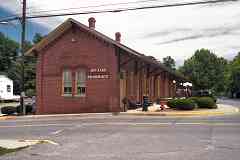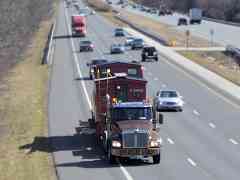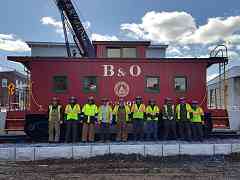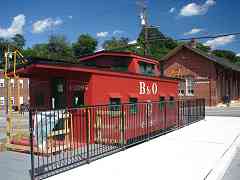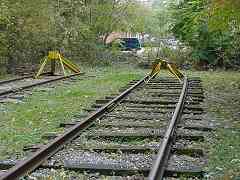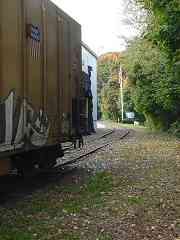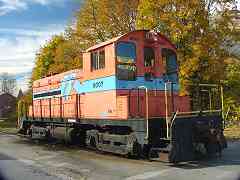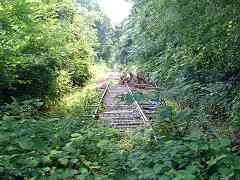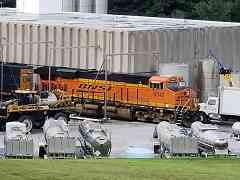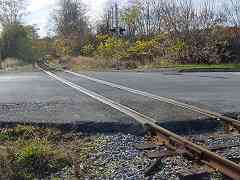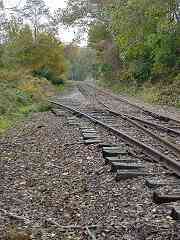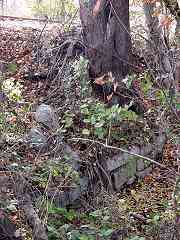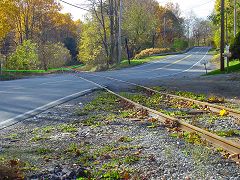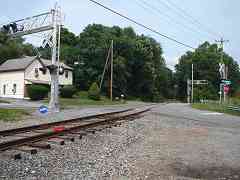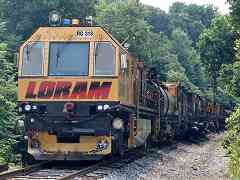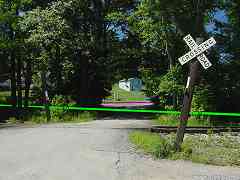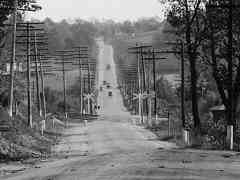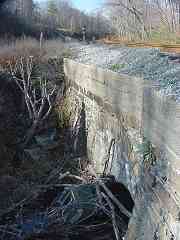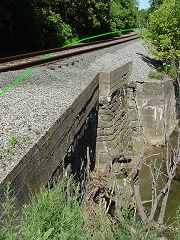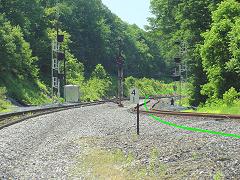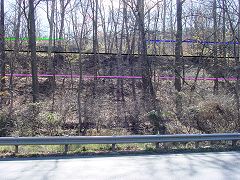|
If you visit at the right time of day and season, the sun helps
to illuminate the various "shelves" upon which the alignments
had sat. This is the view looking south from the intersection
of MD 144 and Sidney Road.
The green line at top left marks B&O's original 1831 alignment;
it stayed level between the base of Plane 3 (farther left) and the
top of Plane 4 (here). Records indicate a wooden bridge
had spanned the dip in the land at the rightmost endpoint of the
green line. The construction of I-70 (blue line) scrambled the
artifacts of that alignment.
The black line shows the currently active Mt. Airy Cutoff
alignment as it descends from the ridge.
The magenta line illustrates the 1838 alignment, constructed
at the same time as the Mt. Airy Loop. The roughly 2-mile-long
regrade eliminated the need for Plane 4. Note how its
slope is roughly the same as that of the Cutoff.
Bush Creek flows at the bottom of the hillside, and the
pavement of MD 144 is seen in the foreground.
The Loop remained B&O's only way over Parrs Ridge for over 60 years.
However, the 1.5% grade was still a challenge that necessitated
the stationing of helper engines to assist
pushing heavy trains over the ridge.
To reduce the grade further, around 1900 construction began
on the Mt. Airy Cutoff, which included the half mile long
Mt. Airy Tunnel. Even though the Cutoff eventually took over
as the primary Old Main Line right of way, the Mt. Airy Loop
served well for more than 170 years.
| 